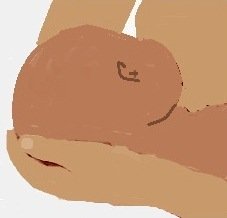
| ||
|
| ||
Breastfeeding ChecklistHelpful Breastfeeding Supplies For New MothersUse our breastfeeding checklist to determine which supplies you might find most helpful for feeding your new baby. 
Breastfeeding Supplies You Should Know AboutBreastfeeding is a natural process, and as such requires little in the way of resources to promote it, outside of a healthy diet for the mother. There are, however, a number of products that women have used that have helped support the lactation process.This does not mean that an expectant mother should go out and purchase all or any of these items. It may be helpful, however, if she has such a list on hand of items that might be helpful to her. In the early days and weeks of nursing, she can turn to the list to help her locate resources she may need if the occasion arises. Find Community Resources in Your AreaLactation Consultant Contact InformationOf course, one of the most important resources is access to a lactation consultant or other breastfeeding advocate who can help with any questions or difficulties you may face. It is best to have the name and phone number before help is needed.Nursing Support GroupLactation Consultants have a wealth of information to help women through any situation, but sometimes it is simply support from another breastfeeding mother that helps the most. Check for breastfeeding support groups in your area. Getting together with them can provide encouragement, tips and suggestions you may not have thought of, and just fun being with women in similar situations.Treating Sore NipplesLanolin CreamPurified lanolin cream is often recommended for treatment and prevention of sore nipples. It may be available from your hospital or in most drug stores. There are medicated pads that are also available from your local pharmacy that can be placed directly on the nipple and left there between feedings. The pads are soothing and promote healing.Hydrogel PadsAnother option for sore nipples is hydrogel pads which also promote healing. One study found the hydrogel pads the most effective for healing of sore nipples. If nipples do become sore, consult the lactation consultant immediately to determine how to get the baby to latch on correctly. This problem often occurs after discharge from the hospital. If the tissues are tender and need healing, gel pads are available from drugs stores which bring relief and promote the healing of the tissues.Breastfeeding OintmentJack Newman, MD, recommends the following ointment to be prescribed for women with sore nipples. You would need to have your physician, midwife, or nurse practitioner prescribe it for you and a pharmacy dispense it.
Not all physicians are familiar with this special nipple ointment. Right the prescription down, and ask your physician to prescribe it if you have tissue breakdown. You may need a special pharmacy to mix the ointment. To Pump or Not To Pump - That is the QuestionIn today's world, many breastfeeding mothers find it beneficial to use a breast pump, or to extract breast milk manually. The question is, “Which pump is best?” And of course the answer depends on the particular need of the mother. Numerous options are available, and they range in cost from free (one's own hands) to several hundred dollars. A mother should plan to spend a little time researching her options prior to making her purchase. It is also recommended that if she does buy a pump, she should buy one made by a company that specializes exclusively in breastfeeding support. One lactation consultant states that companies that make both bottles and breast pumps seem to intentionally make pumps that fail and discourage breastfeeding in order to gain another bottle feeding customer. While this view may be a bit cynical, it certainly is accurate to state that companies that market breastfeeding supplies exclusively have a commitment to research and develop the very best products for nursing mothers and babies.The options a mother has include
Different Uses - Different Pumps
Pillows and Other SuppliesBreastfeeding PillowsMany women find breast feeding pillows an asset. For years, women have used bed pillows or decorative pillows to help support their arms while nursing. This puts some of the weight on the pillow and less on the mother’s muscles. There are a number of pillows on the market that are designed just for this purpose and fit mothers’ and babies’ bodies better. There is nothing wrong with your bed pillow, but if you find you are not comfortable with the way it feels, you may want to consider spending $30 or more for a nursing pillow.Nursing BrasTwo to three well-fitting nursing bras are an assett, although they are not essential for nursing. Generally, you should get a size larger than your usual (non-pregnant or lactating) bra size. If you have difficulty finding bras that fit you, many lactation consultants are specially trained in measuring and fitting women who have difficulty with standard bra sizes.More Information for MothersExcellent information on techniques and supplies to assist with specific breastfeeding problems has been written by Jack Newman, MD. This pediatrician has committed his career to the promotion of breastfeeding. His book The Ultimate Breastfeeding Book of Answers provides a wealth of information on numerous breastfeeding topics. Other articles written by him are available on the internet. |
||
|
|
||
|
By Karen Newell Copyright 2003 - 2012 Better Childbirth Outcomes - All Rights Reserved
Camp Hill, Pennsylvania, USA | ||